We’re fortunate to have plenty of water-based wonders that we can explore in the UK and Europe. From literary geniuses like William Wordsworth and Beatrix Potter to Bavarian King’s, serene freshwater lakes and rivers continue to be a great place for those looking to be inspired or for those looking for a restful retreat. A holiday by the water offers the perfect opportunity to explore the enchanting riverside towns, alpine foothills, tumbling waterfalls and ancient forests on foot or by bike. So, we’ve collected some of our favourite lakes and rivers below to inspire your next getaway.
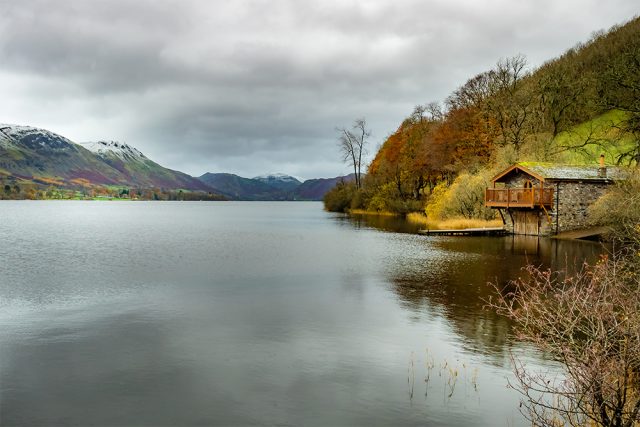
Known for its fell mountain landscapes, shimmering glacial ribbon lakes and fascinating literary connections, The Lake District in northwest England has attracted travellers and hiking enthusiasts for centuries. The Lake District remains one of the nation’s favourite places for a staycation, and for good reason. With its breath-taking lakes, deep rolling valleys and quintessentially English inns dotted across its 2,292 sq km, the Lake District has offered a serene escape and place of inspiration for many. Recognised as a UNESCO World Heritage Site in 2017, the park has 16 different lakes, however, unbeknown to most, only one of the lakes, Bassenthwaite Lake is an official “lake” by name, the other 15 are classified as tarns, meres and waters.
On our Literary walking in the Lake District, you can enjoy a 6-night holiday where you can explore the South Lakes and wander in the footsteps of famous literary geniuses like William Wordsworth, Arthur Ransome, Samuel Taylor Coleridge, and, of course, Beatrix Potter, who was a lifelong lover of the Lakes. Following quaint lakeside paths towards thundering waterfalls, babbling brooks and pine forests, you’ll visit Wordsworth’s Dove Cottage near Grasmere Lake, the National Trust’s Beatrix Potter Gallery in Hawkshead and walk alongside the pristine shores of Coniston water that served as inspiration for Arthur Ransome’s adventure novel Swallows and Amazons. If you’re wanting to explore a different route in the area, our Walking from coast to coast west lets you embark on a long-distance walking route described by British fellwalker and guidebook writer, Alfred Wainwright, from St Bees on the Irish Sea to Kirkby Stephen in the Yorkshire Dales National Park.
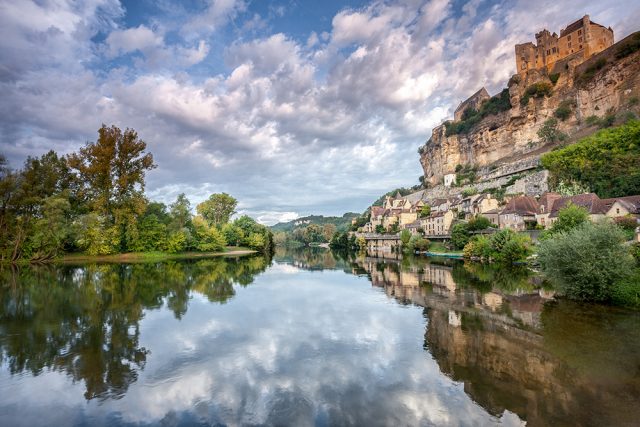
Situated in Southwest France, between the Aquitaine Basin and Massif Central, Dordogne is the third largest département (county) in France. The striking Dordogne river that divides the landscape rises in the Massif Central and continues flowing west for over 400km to the Bec d’Ambès, north of Bordeaux. The beauty in this region can be found in the bucolic countryside that’s peppered with storybook châteaux and hilltop bastides (fortified villages) which stand high above the Dordogne river banks. Steeped in legend, the Dordogne River witnessed centuries of history and conflict, most notably when it was used as the frontier between the French and English forces during the Hundred Years War (1337-1453).
The golden cliffs and waterfront villages of medieval stone that can be found along the Dordogne River are nothing short of enchanting. On the river itself, you might also see traditional gabarres (barges) with tourists on them that were primarily used to transport salt and barrels of wine downstream in the 19th century. On our Dordogne River Walk trip, you can explore these well-marked riverside paths, traditional Perigourdine markets and the stunning La Roque-Gageac, perched above the Dordogne. If you’d like to discover this charming region on two wheels, our Dordogne Valley and villages cycling trip takes you along the banks of the Dordogne and Vézère river, through ancient woodlands and past quaint farmsteads. After visiting Montignac, a beautiful village on the Vézère River, we’d recommend exploring the Grotte de Lascaux, France’s most famous prehistoric cave paintings, known as “the mother of all caves”. Discovered by accident by a group of teenage boys in the 1940s, Lascaux’s fantastic trove of rock art is ranked as the number one prehistoric site in Europe to visit.
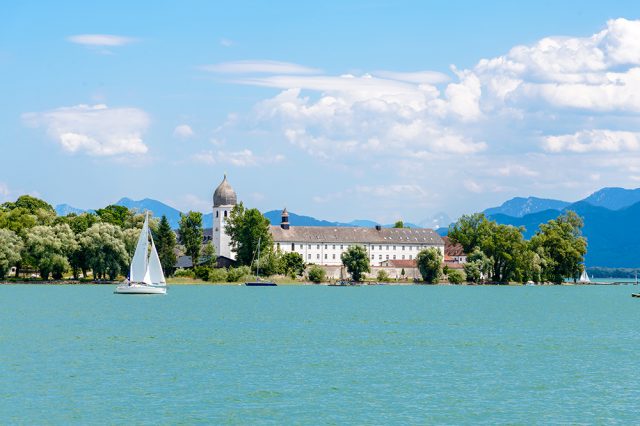
The shimmering Lake Chiemsee is Bavaria’s largest lake. Formed like many other pre-alpine lakes at the end of the last ice age from a hollow carved out by a glacier, known as a Zungenbecken, Lake Chiemsee remains a popular retreat for Munich residents and foreign visitors alike. Known as the “Bavarian Sea” thanks to its large surface area of 80 sq km, it also has tides like the sea, and is said to have originated from the primaeval Thetis Sea, a body of water from the Mesozoic area that once covered half of Europe.
One of the reasons why people flock to Lake Chiemsee, aside from swimming and hiring a boat to glide through its crystal-clear waters, is to see the three islands situated on the western side of the lake, Herreninsel, Fraueninsel and Krautinsel. The most popular island is Herreninsel, thanks to the spectacular Schloss (palace) Herrenchiemsee built by King Ludwig II in 1873. Said to be modelled on Versailles, the decadent Herrenchiemsee palace was built as a homage and “temple of fame” for King Louis XIV of France, whom the Bavarian king admired. Even though 50 rooms of the palace remain unfinished, the grandeur of the magnificent state staircase, state bedroom and the intricate Great Hall of Mirrors, look as if they were plucked right from the pages of a fairy tale. See this enchanting palace, formal gardens and fountains for yourself on our Cycling Bavaria’s Lake Chiemsee trip.
On this single-centre self-guided cycling holiday, you’ll get the opportunity to visit typical Bavarian villages and explore alpine foothills trails that surround the lake. With boat tours to both Harreninsel and Fraueninsel, you’ll also enjoy exploring Ludwig’s Schloss Herrenchiemsee and a 1,200-year-old Frauenwörth Monastery on Fraueninsel island that’s still in use today. If all the walking has made you peckish, the monastery also makes its very own gingerbread and marzipan!
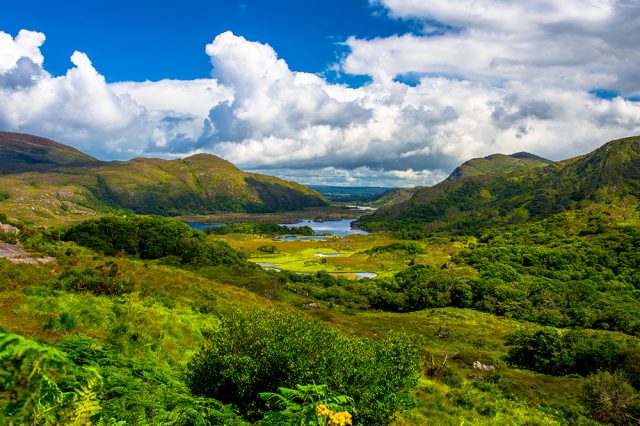
The majestic Lakes of Killarney are all situated within Killarney National Park, County Kerry in southwest Ireland. Deep in a mountain-ringed valley at the foot of the MacGillycuddy’s Reeks, you’ll find three serene lakes, the Upper Lake, Middle Lake (Muckross Lake) and Lower Lake (Lough Leane). Queen Victoria and her ladies-in-waiting were so captivated by the view overlooking the broad valley of the Killarney Lakes, the spectacular panorama was named in their honour thereafter as the “Ladies view”. Aside from the lakes, Killarney National Park is also home to Ireland’s 10 highest peaks and the country’s oldest oak forests, where herds of native red deer (Cervus elaphus) and white-tailed sea eagles (Haliaeetus albicilla) are known to roam and sore. So, it comes as no surprise, that this charming area is one of the most idyllic places on the Emerald Isle to explore on foot and by bike.
On our Walking and Cycling the Wild Atlantic Way trip, you will get to explore this beautiful region at your leisure. Your route begins by cycling to Muckross Lake and the 15th century Ross Castle before taking a scenic boat trip through the three Lakes of Killarney to Lord Brandon’s cottage. Next, take an unforgettable ride through the stunning Gap of Dunloe and a walk through the Esknamucky Glen towards the famous Torc waterfall. Your adventure ends with a 3-night stay in Dingle, where you can enjoy traditional Irish music and their famous warm hospitality in a cosy Dingle pub.
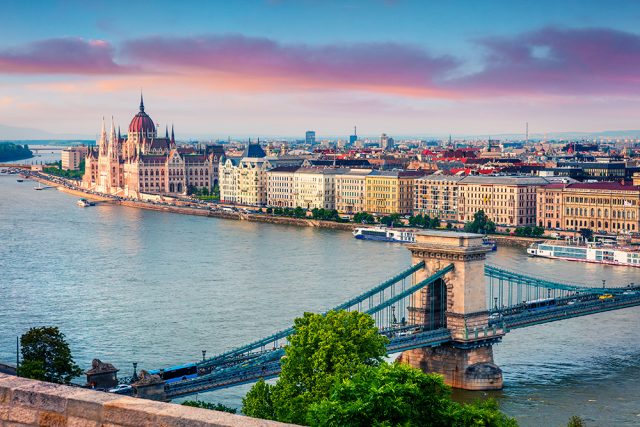
The Danube River is the longest river in the European Union and the second-longest on the continent. Once a long-standing frontier for the Roman Empire, the Danube flows through 10 different countries including, Germany, Austria, Slovakia, Hungary, Croatia, Serbia, Romania, Bulgaria, Moldovia and the Ukraine. The very name “Danube” is derived from its ancient Roman name, “Danubius” and Celtic word “danu”, which means “to flow” or “to run”. Its storied history throughout the ages has seen the river be used as a route for emperors and kings, a strategic highway for transporting goods and a vital water source for over 20 million people. However, for travellers, it’s seen as the scenic ribbon that unites central and eastern European influences, leaving behind a spectacular panorama of quaint villages, striking palaces, ancient churches, and castles from bygone eras along the riverside.
If you want to see historical sites along the Danube, our Cycling along the Danube from Vienna to Budapest takes you on a country-spanning adventure through Vienna, Bratislava and Hungary, following key sections of the Danube. Starting by visiting the grand Schonbrunn Palace and the Sigmund Freud Museum in Vienna, your route takes you through Donau-Auen National Park towards the Roman remains of Petronell-Carnutum, Bratislava, and the gothic town of Gyor. One-third of the Danube’s total length is in Hungary, so your route will take you back to the Danube Bend at Esztergom, where you’ll ride on to see the castle of Visegrad, the 19th Century Chain Bridge and the striking Budapest Parliament building.
If these beautiful lakes and rivers have inspired you to start planning ahead for a tranquil lakeside or riverside getaway, view our full Lakes and Rivers collection here.